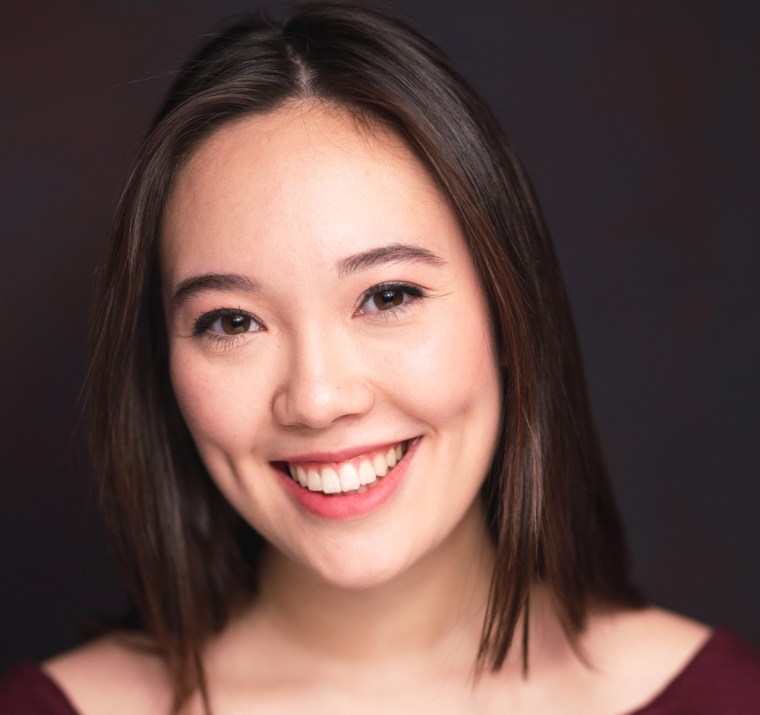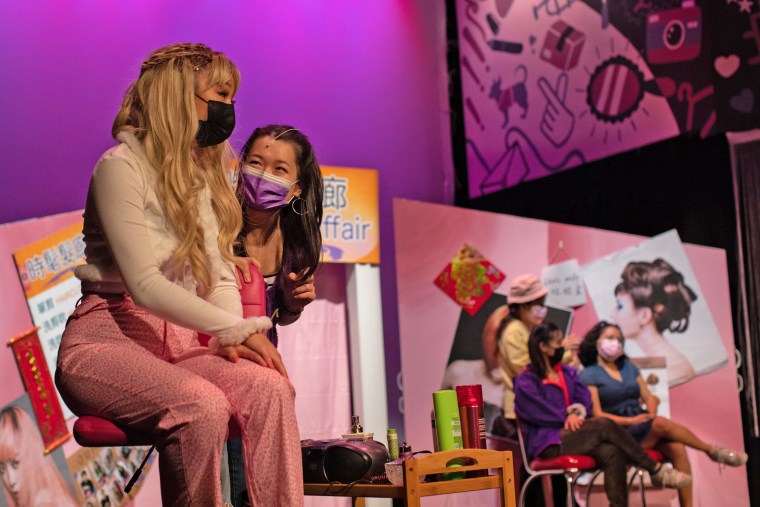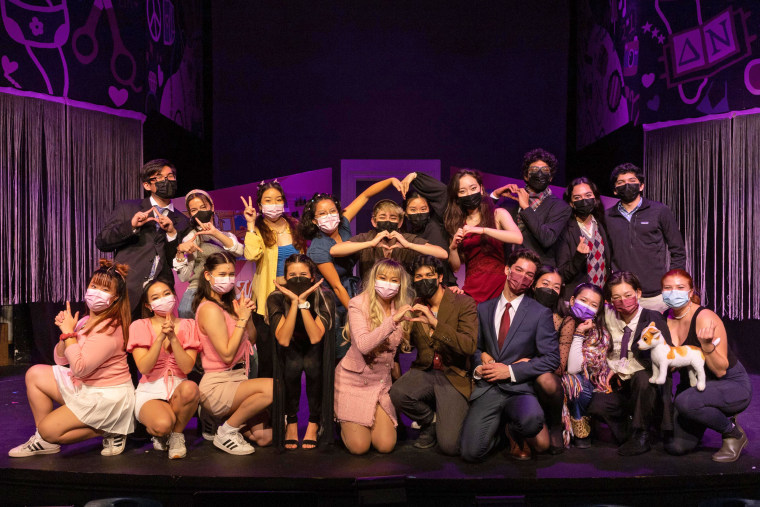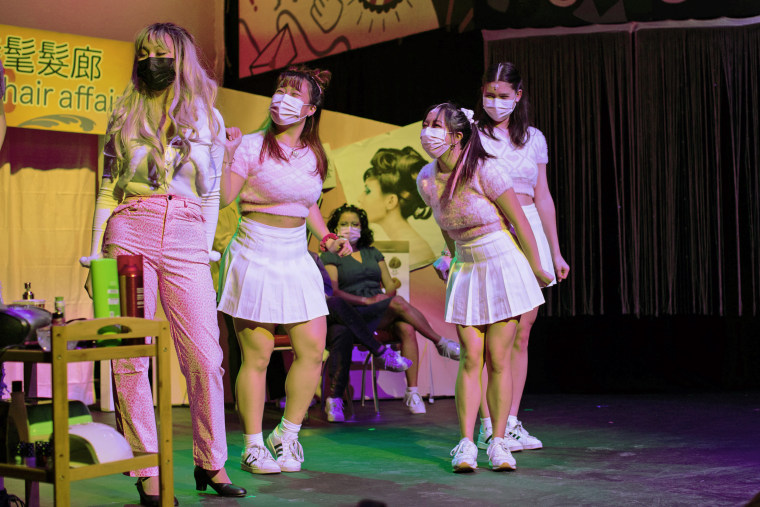When Harvard’s Asian Student Arts Project first decided to perform “Legally Blonde” with an all-Asian cast, it was something of a joke. But by the time the musical sold out last month, it had become a reflection on white privilege, class and the model minority myth.
“The story of Elle going to Harvard is a story of white privilege,” Karina Cowperthwaite, a Harvard junior and the director of the show, told NBC Asian America. “She is blonde, beautiful, rich and white. The admission officers take one look at that identity and say, ‘Yes, she’s in.’”

For the past several years, the Asian Student Arts Project (ASAP) had put on performances with an all-Asian cast, including "M. Butterfly," but finding the right one this year was difficult, Cowperthwaite said.
“There are no musicals that talk about Asian American identity in a way that is not slightly offensive, tropey or relies on stereotypes,” she said. “They’re honestly pretty racist.”
One member jokingly suggested an all-Asian version of “High School Musical.” Cowperthwaite, co-president of ASAP, didn’t love the suggestion, but it gave her an idea: “Legally Blonde.”
“There are a lot of nonrace specific musicals that are just automatically assumed to be white,” she said.
ASAP redesigned the musical’s original set and costumes, and made changes to the script to reflect an Asian American experience. For instance, Elle’s neighbor was no longer Richard Simmons, but Mindy Kaling. Elle’s pink style included a Hello Kitty obsession, and Paulette’s salon was set in Chinatown. To get inspiration, the set designer visited Boston’s Chinatown, and added traditional Chinese characters to the sign on the salon that says “The Hair Affair.”
Adapting it to an Asian American context also meant reconsidering deeper aspects of the story.

“On the one hand, we’re exploring the model minority myth and being considered a privileged minority in this country, but also thinking about the immigrant narrative of being Asian American, and how that translates into working in a salon,” Cowperthwaite said.
The show also explores the backstory of Elle’s love interest, Emmett, who comes from a lower-income family and has to work three jobs to keep up at Harvard.
“It’s breaking down the narrative that the Asian identity is a singular experience,” Cowperthwaite said. “I think that is something that mainstream art struggles with, in terms of representation by filing down Asian identity to one trope or one identity. When you have a musical where every single character is played by someone Asian, suddenly you have this giant array of how Asian identity can exist in this one environment of Harvard.”
The show also explored Elle’s blondeness within the Asian American experience and how whiteness is often romanticized, she said. The blonde wig used by actress Natalie Choo, who played Elle, had dark roots to show she was not a natural blonde. “There is a performativity of blondeness that exists in the original musical. It’s just in a different context now that Elle is Asian American,” Cowperthwaite said.

Cowperthwaite, who is biracial, attended a predominantly white high school and was the only Asian American in her theater program at the time. She said keeping her Asian identity separate from her love for theater was the best way to avoid typecasting.
But now she knows how to appreciate both. “I suddenly understood that equating art with identity is something that is important, necessary and powerful,” she said.
When the show, which was produced in just six weeks, sold out, she said she was thrilled.
“We have an all-Asian cast and we’re filling houses of audiences to see that cast, which has never happened before,” she said. “In terms of representation, to me it’s a really big step forward, especially on our campus.”
She added: “This production is a love letter to all those girls out there who dream of being Elle Woods but feel like they can’t because they don’t look like Reese Witherspoon.”
